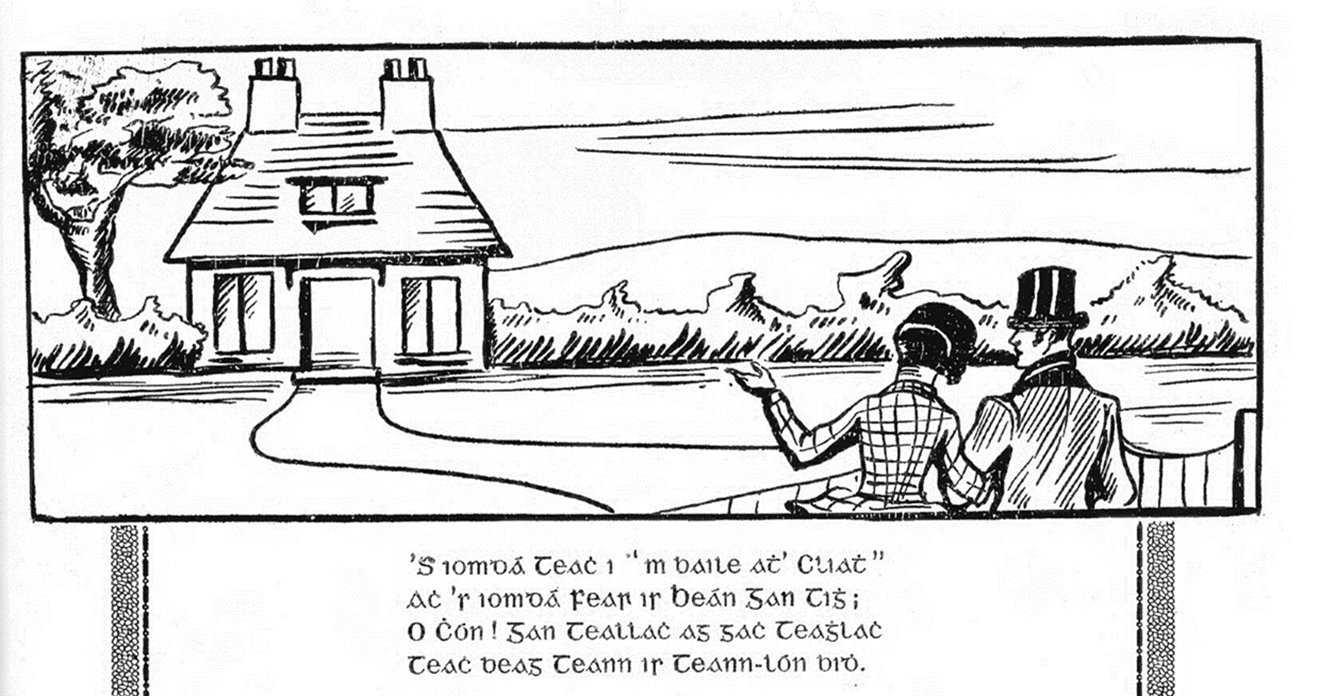Chapter 5
Reachtaíocht i 1924 agus 1925 agus ‘cúnamh a thabhairt d’fhiontar príobháideach
LEGISLATION IN 1924 & 1925 AND ‘‘ASSISTED PRIVATE ENTERPRISE”
In ainneoin go raibh an scéim ‘milliún punt’ mar chéim shuntasach chun tosaigh, ní go dtí lár na 1920idí a cuireadh tús le clár seasmhach de thógáil tithe. Faoin am seo, bhí gá práinneach ann do chur chuige nua a ghlacadh maidir leis an ngéarghanntanas ginearálta do thithíocht - cur chuige a chuimsigh cúnamh a thabhairt d’fhiontair phríobháideacha.
While the ‘million pound’ scheme was an important first step, it was not until the mid-1920s that a sustained programme of house building got underway. By this time the general shortage of housing was so acute that a different approach was urgently required - one which included assisting private enterprise.
Strangford Gardens, East Wall, built by St. Barnabas Public Utility Society, Ireland’s first public utility society.
Cover of Dublin Housing Week programme, October 1925. The event highlighted the activities of public utility societies.Courtesy of Joe Brady.
While the ‘million pound’ scheme was directed solely at urban local authority housing, there was a general shortage of housing nationally. This acute housing problem was affecting ‘the comfort, the health and the morale of the working and lower middle classes’.* In June 1923 Minister for Housing, Ernest Blythe, stated that the housing problem was ‘of appalling magnitude’, and that every consideration would have to be given to getting ‘the best possible value for any money voted for housing’.**
In these circumstances, there was a broad welcome for the 1924 Housing (Building Facilities) Act which supported house-building by both public and private developers. It deliberately ‘intended to transform the erection of small dwellings into a business proposition for landlord and tenant, builder and purchaser’***. Grants were made available for building houses with a floor area between 520 square feet and 1,000 square feet. A special exemption was made for permanent civil servants, where the maximum house size was 1,500 square feet! Other measures included reduced local rates (taxes) and the potential for local authorities to offer further grants, low interest loans, and serviced sites for housing.
Although there was some unease about subsidising private builders, it was claimed that this would provide houses in a more cost effective way than funding public bodies. ‘You would get as much out of £180, given to a private builder as £500, given to a public body.’**** The Government argued that giving a small subsidy to a large number of homeowners would encourage both house-building and increase employment.
When the Housing Act was updated in 1925, it made special provision for ‘assisted private enterprise’ through public utility societies. These public utility societies were a co-operative organisation for house building that could receive the same level of grants per house as local authorities. Initially public utility societies were focused in Dublin, including on the Corporation’s ‘reserved areas’, but they gradually spread across the country.
*Irish Builder and Engineer, 17 May 1924, p. 429.
**Ernest Blythe TD, Dáil Éireann, 22 June 1923.
***Irish Builder and Engineer, 17 May 1924, p. 429.
****Ernest Blythe TD, Dáil Éireann, 22 June 1923.
FIND OUT MORE:
DRUMCONDRA: A REFLECTION
OF NATIONAL ISSUES
Chapter 6
CABRA: AN INDICATION OF CHANGING PRIORITIES
Chapter 8
Chapter 7
CHANGING POLICIES AFTER 1929










